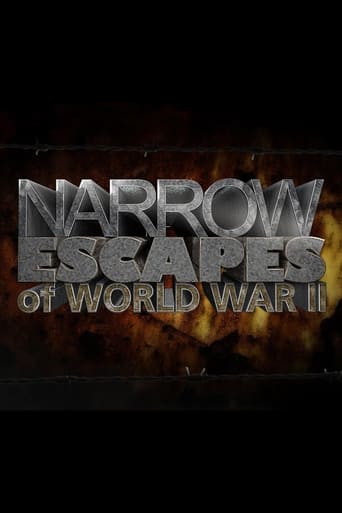verbusen
I like this series. I wish they would expand it to other wars, like WW1 and Korea and Vietnam. It's enthralling and very emotional compared to the strategic level war history shows that are in abundance. One negative I have seen though is the film makers are using stock footage that does not match the battles. Tiger tanks did not fight in 1940 (or 41 or 42, they use a lot of Battle of the Bulge German footage we have all seen for decades). And Joe Louis did not serve at the Battle Of The Bulge. That said, it's a series I have set on DVR and watch ahead of other series, it's a refreshing show for war buffs like me who are tired of shows about Hitler and his inner minions. As long as you don't focus too hard on the mismatched stock footage you should enjoy it, maybe more so when you catch Joe Louis getting a medal just because that was the only footage they had of a black soldier getting a medal (Legion Of Merit!). I guess make the most of it and chuckle! Still an interesting watch so 7 out of 10 for my rating.
Robert J. Maxwell
In World War II, American units were segregated by race, and the 333rd Field Artillery was black, led by a respected white officer. Along with an utterly green infantry division, the 116th, they were posted at the "ghost line" of the Ardennes Forest, where everything was peaceful and quiet.There are two reasons the Americans found it peaceful and quiet that December of 1944. One was that no counter attack to the Allied advance was expected by that time. It was Christmas, and the end of the war was only months away. The other reason it was quiet was that the Germans were secretly amassing everything they had left for a massive punch through the Ardennes, the "ghost line", that later became known as the Battle of the Bulge. The slight hints of German activity that managed to reach the Allied planners were dismissed.The German Army is exhausted and defeated, therefore there is no need to prepare for a counter attack. That's what the Allied generals thought. Here's what a sociologist, W. I. Thomas, thought, in a sentence sometimes called "the Thomas theorem." "If men define situations as real, they are real in their consequences".The talking head, George Shomo, a staff sergeant at the time, who is the only apparent survivor, is from New Jersey and, though I sometimes questioned his memory, such as his killing three German soldiers with a trench knife, he's not an angry black guy. He describes, still with a sense of lingering wonder, being shipped from the North to a training camp in the South and encountering systematized segregation.The black artillery men were swept up in the German attack, along with many others, including Charles Durning. It was the largest surrender in American history. The SS deliberately executed almost two dozen American soldiers at Malmedy. Every American with an interest in the war knows about it.The SS also captured eleven black soldiers lost in the forest and executed them too, but only after inflicting unimaginable torture on them. But nobody hears much about it, and until 2004 there was no memorial to mark the spot. A small shrine was put up by a French family that had harbored the fugitives. The elite 101st Airborne got all the glory and decorations but the 333rd Artillery was forgotten about.Shlomo feels this neglect was deliberate, that the black man was "the invisible soldier." He's probably right but partly for the wrong reasons.If you want to keep an audience happy, as all war-time propaganda machines do, don't confuse them. Keep it simple. There should be only one hero, not two, and not three or four. It's a zero sum game. The pieces of the pie are limited. The neglect of the black troops, while real enough, likely was part of the price they paid during the war. Race had something to do with it but we don't know how much.Earlier in the war, in one of the naval battles around Guadalcanal, of the many American ships damaged, two were sent home to San Francisco for repair and refitting. The cruiser arrived amid cheering crowds, flying flags, and playing bands. A week later, a destroyer that had been half wrecked and had suffered a greater proportion of casualties, docked with quiet humility across the bay at Mare Island. No bands, no crowds, no decorations. There is such a thing as too many heroes.
